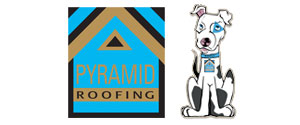- Do you subscribe to Dharma Dog Training’s Newsletter? You should.
- A Unique Campaign from The Humane Society of the United States
- Rabid bats in Omaha- Stay safe, prepared with these tips
- Springtime Activities in Omaha
- Mill Dog Monthly from Bailing Out Benji
- World Spay Day, Legislative Alert in Nebraska
- Attend the Nebraska Rescue Council’s monthly meeting this Saturday
- Five Hard-to-Ignore Reasons to Adopt!
- Paws in Pink to Benefit Breast Cancer Foundation
- VCA, Inc. Acquires MidWest Vet Specialists from Kansas State University
Dog hair everywhere? Here’s why, plus tips to tidy up

Got a dog? Then unless you’ve chosen one of the few non-shedding breeds, it’s likely you’ve got fur, too—on everything. Every table, carpet, rug, nook, and cranny—and probably on your clothes, too.
But living with a dog doesn’t mean you need to give in to hair. You and your dog’s fur can co-exist happily if you know best how to take care of your pet so it’s healthy, which means it sheds normally and naturally.
For starters, it’s important to know how your dog sheds; some have a twice-a-year blow out in which they lose lots of hair. But however they do it, losing hair is an important biological process.
Certain grooming routines can help your dog maintain its coat. For example, pick the right brush for the job—longer coats need a different brush that coarser coats, for example.
What else can you do? This graphic from PETCO can help.
Why Do Dogs Shed?
Dogs shed for an important reason: to get rid of old, dead fur to make room for new growth, according to Vetstreet.com. This happens year-round, but some breeds shed heavily twice a year in what’s called “blowing their coat.” This typically occurs in the spring, when many dogs shed their winter coat to make way for a lighter summer coat, and again in the fall when dogs get rid of that lighter coat in favor of warmer, denser fur. And dogs that are mostly indoor dogs tend to shed more evenly throughout the year as their coat density tends to be more uniform.
Before you blame the furry tumbleweeds in your house solely on your dog, know this: Humans shed between 50 and 100 hairs every day. And we shed hair for the same reason—to get rid of old hair and make way for the new.
Not All Breeds Shed the Same
There are some dog breeds that shed more than others. Shedding is most apparent in double-coated breeds. They have a long protective overcoat as well as an insulating undercoat.
According a poll of veterinarians by Vetstreet.com, the breeds that shed the most include Saint Bernards, Great Pyrenees, Chow Chows, Akitas, Siberian Huskies, Golden Retrievers, German Shepherds, Labrador Retrievers, Alaskan Malamutes and Alaskan Huskies.
Shedding and Medical Issues
According to the Animal Medical Center, most shedding is normal, but excessive shedding can be cause for concern. If your dog sheds quickly or excessively, visit your veterinarian. One common reason for excessive shedding is fleas, many times leaving bare skin behind. Dogs who are allergic to flea bites scratch, which causes fur to fall out quickly and in large quantities. Excessive scratching can lead to skin infections, which can also cause fur loss. This is why it’s especially important to prioritize flea prevention.
Other issues may include thyroid disorders, diabetes, allergies, cancer or more. Sometimes excessive shedding can be due to a nutritional deficiency, so making sure your dog eats a high-quality diet is key to overall well being, including skin and coat health. Regular checkups with your veterinarian help you detect any issues you may need to address.
Tips to Help Reduce or Control Shedding
The good news is that while most dogs shed, there are ways to keep the shedding under control. The key is to stay on top of it. Here are some ways to keep the fur from flying.
Brush your dog regularly – Brushing is a great way to keep pet fur under control and your dog happy and comfortable; it loosens the undercoat and removes excess fur. (Plus it’s a bonding experience for you and your dog.) Brushing is also healthy for the live fur and the dog’s skin, because it increases circulation and distributes oils throughout the coat and skin. Additionally, brushing benefits your dog because you can remove any uncomfortable knots and matted areas as well as look out for any injuries or ticks. There are wonderful products such as the FURminator to make grooming time as productive and enjoyable as possible.
Bathe your dog – You can bathe your dog at home and/or incorporate professional grooming sessions to keep your pet’s fur under control. This can include a bath, brushing, blow dry or a haircut. Just like a shower can make us feel better, freshly groomed skin and fur that’s free of tangles, dirt, and pests can help your dog feel more comfortable. Most dogs should be bathed at least once every three months, while others should be bathed more often depending on their breed or if they spend a lot of time outside or have certain skin conditions.
Feed your dog high-quality food – While shedding is normal no matter what your dog eats, a high-quality diet helps keep coats healthy; a low-quality diet can increase shedding.
Keep your home clean – No matter how diligent a pet parent may be about keeping shedding under control, pet fur is just a fact of life. Here are some ways to control the fur in your home.
Remove pet fur from upholstery and bedding – Remove fur as soon as possible; it builds up very quickly. Lint brushes or rollers are great tools. In a pinch, you can pick up fur by rubbing a damp sponge across a surface.
Consider leather furniture instead of upholstery – Leather repels fur, making hair easier to vacuum up.
Cover furniture and car seats with removable, washable covers – With regular washing, seat covers help keep your home and car clean and (mostly) fur-free.
Wash bedding frequently – You should wash your pet’s bedding at least once a week to keep fur at bay; it also cuts down on dirt, bacteria, allergens and pests in your home.
Take note: When washing pet bedding or covers, it may take a little extra work to get the pet fur out. First remove all visible pet fur with a lint brush or roller. Then, put the items in the dryer on tumble dry/no heat for about 10 minutes. This loosens the material’s fibers to release hidden fur. Remove the items and shake them out. Then, run through your normal wash cycle.
Vacuum often – Invest in a good vacuum that can handle pet fur. Many brands have a special model that is designed to deal with heavy pet fur.
Be sure to clean out your vacuum often to keep it in tiptop shape. Make sure to empty canisters and check the wheels and brushes to remove fur that’s been wound around. And remember, dog fur tends to congregate anywhere and everywhere. In fact, fur often ends up in places we don’t even think about.
Conclusion
Stay on top of dog fur with frequent grooming, brushing and cleaning to cut down on the tufts of fur that can collect in every corner of your home. And look at it this way: A house full of fur means you’re lucky enough to live with a dog.
Related Posts
Latest News
-
3 Tips for Pet Owners on Training Rescue Dogs
Owning a rescue dog can take some work compared to...
- Posted 3 weeks ago
- 0
-
Choosing the Right Pet for Your Lifestyle
Are you thinking about getting a pet but unsure what...
- Posted 1 month ago
- 0
-
How to Make Your Rescue Pet as Comfortable as Possible
Did you bring home a new pet from a shelter...
- Posted 2 months ago
- 0
-
How Having A Pet Can Change Your Life
Having a pet can open your heart in ways that...
- Posted 7 months ago
- 0
-
How To Improve The Life Of Your Senior Pet
Do you have an elderly fur baby and want to...
- Posted 7 months ago
- 0
-
Springtime Activities To Enjoy With Your Furry Friends
Are you preparing for warmer weather and want some ideas...
- Posted 8 months ago
- 0
-
Pros And Cons Of Microchipping Your Pets
Have you considered whether your pets should be microchipped and...
- Posted 9 months ago
- 0

























You must be logged in to post a comment Login